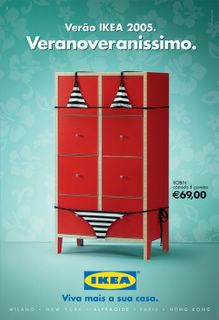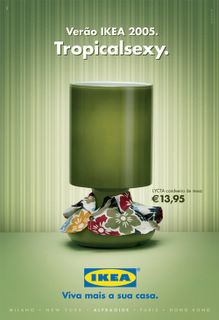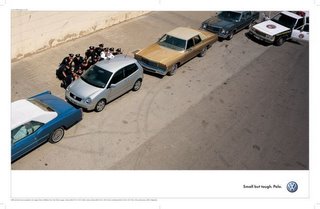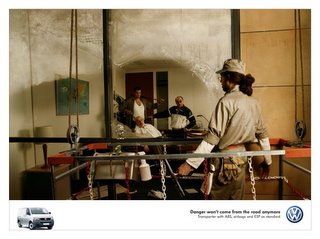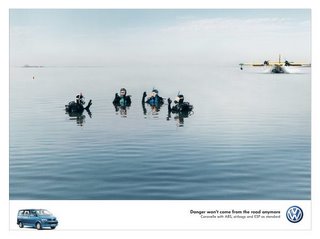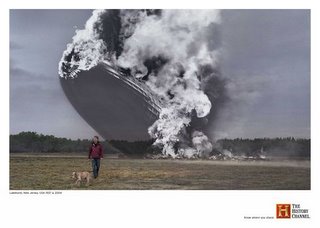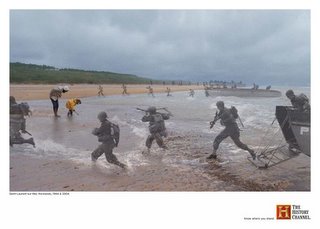EXECUTIVE INTELLIGENCE
Fonte: Menkes, Justin (2005). Executive Intelligence. New York: Executive Intelligence Group, p. 105.Why Is Executive Intelligence So Rare? The multitude of existing leadership theories has confused and distracted us from focusing on key performance criteria. As a result, we have a managerial population that as a whole is weak in Executive Intelligence. Surveys have shown that 80 percent of executives feel that their peers frequently fail to achieve their objectives, and half of those surveyed had no confidence that their colleagues could ask for the appropriate questions needed to take proper action. Prominent leadership experts have consistently cited poor executive judgment as the most important factor in corporate failures. Too many business leaders take action without thinking and are completely unaware of the costs of this tendency. Critical thinking has become synonymous with "paralysis by analysis," while taking immediate action has been mistakenly characterized as a uniformly positive practice. Speed itself is not a prerequisite for good decisions; it is choosing the appropriate speed for a given situation that is one of the most essential components of executive decision-making. Executives often take immediate action, groping their way toward a solution through trial and error, and such action-first behavior is generally encouraged and even rewarded. Asking the right questions when facing a complex decision is no more time-consuming than asking the wrong ones.
AUDITORIA DE MARKETING
Fonte: Thomas, Richard K. (2005) Marketing Health Services. Chicago / Arlington: Health Administration P / AUPHA P, pp. 382-383.Because of the nature of marketing planning, the planner must have an adequate understanding of many aspects of the organization. The development of a marketing plan requires an in-depth understanding of the organization's products and services and the manner in which customers are processed. Detailed information on existing marketing activities is needed. Similar information will typically be required on competitors in the market area.As a result, the marketing-planning process will typically involve an audit of both internal and external factors. In performing the internal audit some or all of the following aspects of the organization would be of interest: Services/products. What are the services provided or products produced? What are the characteristics of these services and products? Customer characteristics. How many customers does the organization have, and what are their characteristics? What are the most pertinent demographic characteristics? Where do patients reside, and what is the "reach" of the organization? What is the case mix of current customers? What are the financial categories of the patient base? Utilization patterns. What volume of services and products is consumed by the organization's customers? How does this volume break down by service line or procedure? Pricing structure. How is pricing determined for the organization's services and products? How does this price structure compare with that of competitors and the industry average? How price sensitive are the goods and services offered? Marketing arrangements. What marketing programs are currently in place, and how is marketing structured? What type and level of resources are available for marketing? Are processes in place for internal marketing? Locations. To what extent are operations centralized or decentralized? How many satellite locations are operated, and how were these locations chosen? Are there markets not being served by existing outlets? Referral relationships. How are customers referred to the organization? To what extent are there formal referral relationships? How dependent is the organization on referrals?
On the basis of a detailed, in-depth study of the operations and strategic decision-making of Centraide, a charitable organization in Greater Montreal, this paper suggests that dependency on the environment can be a stimulus to organizational adaptation. Two major changes over a 10-year period are studied to show that strategic management in high dependency situations requires a continual attention to the organization's relationships and interactions with the forces in its environment, and a continuous management of the process by which change takes place. The basic position advanced is that: strategy in philanthropic organizations is more effective in ensuring survival and growth when the search for autonomy is seen as irrelevant and when dependence is seen as an unavoidable fact that should shape behavior. A set of propositions helps conceptualize the findings and is offered as a guide for further research.
Many sensational ideas have faded away into obscurity because they failed to reach the right people. A strong personal network, however, can launch a burgeoning plan into the limelight by delivering private information, access to diverse skill sets, and power. Most executives know that they need to learn about the best ideas and that, in turn, their best ideas must be heard by the rest of the world. But strong personal networks don't just happen around a water cooler or at reunions with old college friends. As Brian Uzzi and Shannon Dunlap explain, networks have to be carefully constructed through relatively high-stakes activities that bring you into contact with a diverse group of people. Most personal networks are highly clustered--that is, your friends are likely to be friends with one another as well. And, if you made those friends by introducing yourself to them, the chances are high that their experiences and perspectives echo your own. Because ideas generated within this type of network circulate among the same people with shared views, a potential winner can wither away and die if no one in the group has what it takes to bring that idea to fruition. But what if someone within that cluster knows someone else who belongs to a whole different group? That connection, formed by an information broker, can expose your idea to a new world, filled with fresh opportunities for success. Diversity makes the difference. Uzzi and Dunlap show you how to assess what kind of network you currently have, helping you to identify your superconnectors and demonstrating how you act as an information broker for others. They then explain how to diversify your contacts through shared activities and how to manage your new, more potent, network.
ATRAIR RECURSOS
For an entrepreneur to attract potential resource partners, not only must the concept be viable, but there must also be some connection between the founder and potential resource providers. The entrepreneur's reputation, capabilities, commitment, and conduct, as well as all the other components of human and social capital, are often determinants of his or her ability to attract resource partners. Rebecca Reynolds Moore attracted financial resources by leveraging her human resources and social contacts, and with her intensive selling, developing trust and cooperation with partners and her extended network. Vivien Jennings attracted such organizational resources as visiting authors by leveraging her human and social resources, then developing physical resources to enhance the product development in the form of book-signing events. The analytical tool most useful in this process is the resource-development pathway that allows the entrepreneur to begin with starting endowments and connect the specification or identification steps to acquisition. The entrepreneur must consider how one type of resource can be leveraged to acquire another. This assessment allows for acquisition strategies specific to the situation at hand to be developed. Each of these strategies, however, is further facilitated by social skills of the entrepreneur.The ability to sell a business idea through personal capabilities is referred to as a social skill, a competence enabling individuals to interact effectively with others. Distinct form social capital, social skills are what the entrepreneur does rather than the outcome of network relationships. Social skills are learnable, and when utilized effectively can increase possibilities for attracting resources to venture. Five social skills important to the entrepreneur are: Social perception, the accuracy with which the entrepreneur assesses the traits, intentions, and motives of others. Impression management, the way one induces positive reaction for others. Expressiveness, the ability to express emotions and feelings clearly and generate enthusiasm in others. Persuasiveness, the ability to change others' views or behaviors in face-to-face encounters Social adaptability, the ability to adapt to, or feel comfortable in, a wide range of social situations. The skills work in concert as a founder attempts to attract resources to a new venture.
- Everything Bad Is Good for You: How Today’s Popular Culture Is Actually Making Us Smarter, by Steven Johnson, (Riverhead, 2005)
- In the Bubble: Designing in a Complex World, by John Thackara (MIT Press, 2005)
- The Long Emergency: Surviving the Converging Catastrophes of the Twenty-First Century, by James Howard Kunstler (Atlantic Monthly Press, 2005)
- Massive Change, by Bruce Mau and the Institute Without Boundaries (Phaidon Press, 2004)
- Radical Evolution: The Promise and Peril of Enhancing Our Minds, Our Bodies — and What It Means To Be Human, by Joel Garreau (Doubleday, 2005)
- A Whole New Mind: Moving from the Information Age to the Conceptual Age, by Daniel H. Pink (Riverhead, 2005)
- The World Is Flat: A Brief History of the Twenty-First Century, by Thomas L. Friedman (Farrar, Straus and Giroux, 2005)
- Blue Ocean Strategy: How to Create Uncontested Market Space and Make the Competition Irrelevant, by W. Chan Kim and Renée Mauborgne (Harvard Business School Press, 2005)
- The Fortune at the Bottom of the Pyramid: Eradicating Poverty Through Profits, by C.K. Prahalad (Wharton School Publishing, 2005)
- MarketBusters: 40 Strategic Moves That Drive Exceptional Business Growth, by Rita Gunther McGrath and Ian C. MacMillan (Harvard Business School Press, 2005)
- Capitalism at the Crossroads: The Unlimited Business Opportunities in Solving the World’s Most Difficult Problems, by Stuart L. Hart (Wharton School Publishing, 2005)
- Confessions of an Economic Hit Man, by John Perkins (Berrett-Koehler, 2004)
- The End of Poverty: Economic Possibilities for Our Time, by Jeffrey D. Sachs (Penguin Press, 2005)
- The Fortune at the Bottom of the Pyramid: Eradicating Poverty Through Profits, by C.K. Prahalad (Wharton School Publishing, 2005)
- The Travels of a T-Shirt in the Global Economy: An Economist Examines the Markets, Power, and Politics of World Trade, by Pietra Rivoli (John Wiley & Sons, 2005)
- Blood on the Street: The Sensational Inside Story of How Wall Street Analysts Duped a Generation of Investors, by Charles Gasparino (Free Press, 2005)
- Conspiracy of Fools: A True Story, by Kurt Eichenwald (Broadway Books, 2005)
- Ponzi’s Scheme: The True Story of a Financial Legend, by Mitchell Zuckoff (Random House, 2005)
- Will Your Next Mistake Be Fatal? Avoiding the Chain of Mistakes That Can Destroy Your Organization, by Robert E. Mittelstaedt Jr. (Wharton School Publishing, 2005)
- Winning, by Jack Welch with Suzy Welch (HarperBusiness, 2005)
- Creating the Good Life: Applying Aristotle’s Wisdom to Find Meaning and Happiness, by James O’Toole (Rodale, 2005)
- In Praise of Slowness: How a Worldwide Movement Is Challenging the Cult of Speed, by Carl Honoré (Harper San Francisco, 2004)
- The Time Divide: Work, Family, and Gender Inequality, by Jerry A. Jacobs and Kathleen Gerson (Harvard University Press, 2004)
- Time Off for Good Behavior: How Hardworking Women Can Take a Break and Change Their Lives, by Mary Lou Quinlan (Broadway Books, 2005)
- All Marketers Are Liars: The Power of Telling Authentic Stories in a Low-Trust World, by Seth Godin (Portfolio, 2005)
- Brand Hijack: Marketing without Marketing, by Alex Wipperfürth (Portfolio, 2005)
- How Customers Think: Essential Insights into the Mind of the Market, by Gerald Zaltman (Harvard Business School Press, 2003)
- ProfitBrand: How to Increase the Profitability, Accountability & Sustainability of Brands, by Nick Wreden (Kogan Page, 2005)
- Hard News: The Scandals at The New York Times and Their Meaning for American Media, by Seth Mnookin (Random House, 2004)
- Coach: Lessons on the Game of Life, by Michael Lewis (W.W. Norton, 2005)
- Joy at Work: A Revolutionary Approach to Fun on the Job, by Dennis W. Bakke (PVG, 2005)
- Lessons on Leadership by Terror: Finding Shaka Zulu in the Attic, by Manfred F.R. Kets de Vries (Edward Elgar, 2004)
- A Life in Leadership: From D-Day to Ground Zero: An Autobiography, by John C. Whitehead (Basic Books, 2005)


